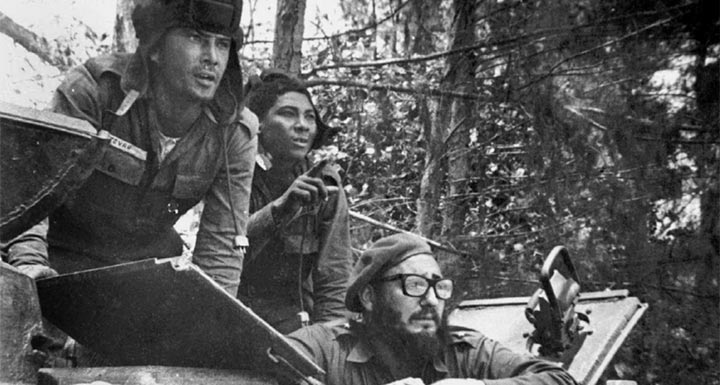
The history of absurd American plots in Cuba
In a remarkable story published Wednesday, the Associated Press revealed that in 2009 the U.S. Agency for International Development had sent a Serbian music promoter to Havana to try to recruit an underground rapper to help overthrow the Cuban government. The plan failed, and Cuba’s nascent hip-hop scene suffered as a result.
That strange plot may sound more like a bad Seth Rogen/James Franco comedy than a real-life example of government action. But in the world of U.S. covert action in Cuba, an American plan to covertly overthrow the Cuban government through hip-hop doesn’t seem that unusual. The list of confirmed and rumored U.S. plots for regime change in Cuba is long and the plots are frequently absurd.
Here’s just a few:
The Bay of Pigs invasion
After the Cuban revolution ousted U.S. ally President Fulgencio Batista in 1959, the CIA, with approval from President John F. Kennedy, backed a paramilitary group that would try to stage an invasion. The invasion, in which 1,400 militiamen landed on a beach in Cuba’s Bay of Pigs in April 1961 with the hope of defeating Fidel Castro’s left-wing government, was swiftly repelled.
“U.S. intelligence was ignorant of everything from Castro’s capabilities to Cuba’s geography to Cubans’ psychology,” The Post’s George F. Will later wrote. The paltry invasion force was outnumbered by Cuba’s 32,000-man army and 200,000 to 300,000 militia members, he explained. As historian Theodore Draper famously said, it was “one of those rare events in history — a perfect failure.”
Exploding cigars and other assassination attempts
After the dramatic failure of the Bay of Pigs invasion and the rejection of a plan to provoke a war with Cuba by committing acts of terrorism in American cities, the United States focused its attention on sabotaging Cuba by other means. One major avenue: attempts to assassinate Castro himself.
The United States is thought to have hatched eight plots to kill the Cuban leader in the 1960s, and some of the ideas ascribed to the CIA are just plain bizarre: plans for an exploding cigar, a scuba suit contaminated with fungus, a booby-trapped sea shell, or having a lover slip him poison pills, for example.
While the provenance of all these plots hasn’t been proven, official documents have proven many others. In 2007, for example, CIA internal documents revealed one plot to give two of America’s most wanted mobsters poison pills with which to kill Castro. The failed attempts became a source of pride for the Cuban leader, and in 2010 Cuban TV ran an extravagant eight-part miniseries on the alleged plots he had survived.
‘Cuban Twitter’ and USAID
After the 1960s, U.S. policy against Cuba gradually shifted from covert action to rely on the commercial, economic and financial embargo imposed on the country. However, a number of schemes devised by the U.S. Agency for International Development have come to light in recent years that appeared to hark back to an age of covert regime change.
Around the same time that the agency was trying to recruit rappers to lead an anti-government movement, it was also creating a “Cuban Twitter” to help foment dissent in the country, according to a story from the Associated Press this year. The company, “ZunZuneo,” actually got some traction and even tried to get Twitter co-founder Jack Dorsey involved but eventually had to give up as it ran out of money.
USAID oversees billions of dollars in foreign aid, but its role in “Cuban Twitter” and the hip-hop plot may well serve as ammunition for countries such as Russia that view the agency as a “Trojan horse” for the United States to conspire against hostile governments. Worse still, these actions also took place not long after Cuba arrested American contractor Alan Gross for installing Internet networks. Gross, a USAID subcontractor, was later sentenced to 15 years in prison, and his release is regarded as one of the key steps needed for increased dialogue between the United States and Cuba.
*Photo: Cuban leader Fidel Castro, lower right, sits inside a tank near Playa Giron during the Bay of Pigs invasion in this April 17, 1961, photo. (Raul Corrales/CP Photo/Granma/AP)
(From the: The Washington Post)

